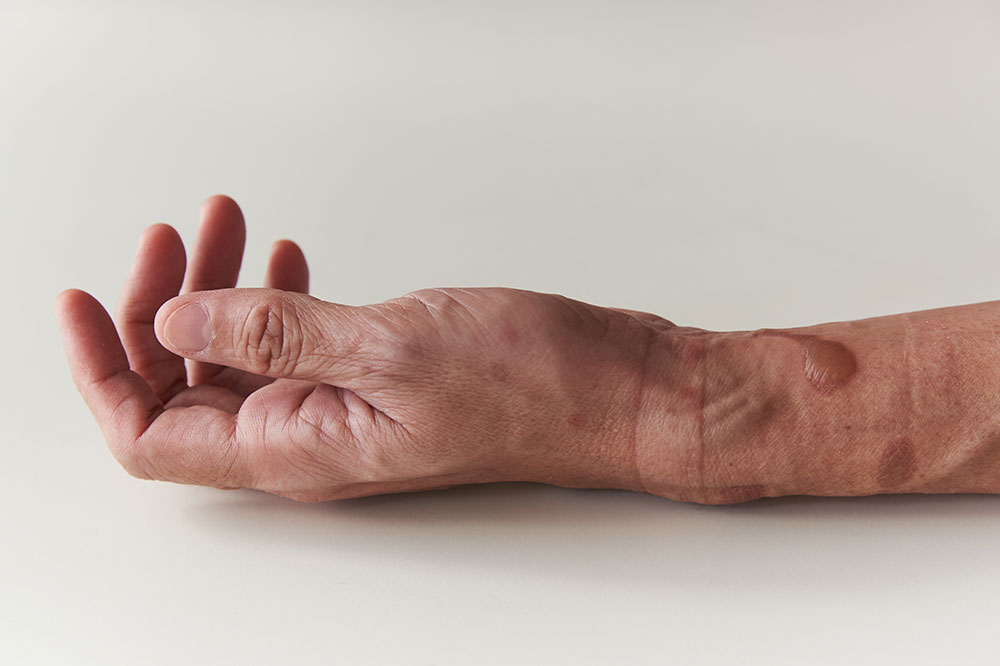
Second-degree burns – Symptoms, management, and recovery
Second-degree burns, or partial-thickness burns, are tissue damage triggered by various factors, including hot objects, flames, chemicals, electrical burns, and sunburns. Such burns usually affect the epidermis and part of the dermis layer of the skin. This condition can cause pain and blistering and must be appropriately cared for and treated to facilitate faster recovery. Keep reading to learn more about the symptoms of second-degree burns and treatment options to manage the condition.
Recovery time
The healing time for second-degree burns varies based on the burn’s size, depth, location, and the patient’s general health. Second-degree burns typically recover in 1-3 weeks, but sometimes it may take longer. Compared to deep second-degree burns, which extend deeply into the skin, superficial second-degree burns, which only affect the top layer of the skin, may heal more quickly.
Care for second-degree burns
Proper treatment is necessary for second-degree burns to heal and avoid complications. The methods listed below are beneficial when managing second-degree burns.
- Cool the burn – Apply cool water to the burn for at least 10 to 15 minutes after it occurs. The use of ice or extremely cold water should be avoided as it could further harm the epidermis.
- Protect the burn – After cooling the affected area, wrap the burn in a clean, non-stick bandage or cloth to ward off germs and dirt. Avoid applying too tight or sticky dressings because they can stick to the burn and worsen its condition.
- Pain control – Second-degree burns can cause pain and discomfort. In such situations, over-the-counter prescriptions can assist with pain relief. However, before taking any treatment, you should always talk to your doctor, particularly if you have allergies or other medical issues.
- Avoid bursting blisters- As a natural defense mechanism, blisters may develop on burned skin. Patients must avoid popping the blisters because it might lead to an infection. If a blister pops on its own, sterile dressing should be applied after carefully cleaning the region with mild soap and water.
- Keep the burn clear- Gently clean the burn with mild soap and water before patting it dry with a fresh cloth. Avoid rubbing the burn or using abrasive soaps, which could worsen the condition.
- Moisturizer – Apply a moisturizer to the affected area to keep the skin hydrated, reduce dryness, and prevent itching. Use a hypoallergenic, gentle moisturizer suggested by a health expert.
- Avoid sun exposure – Sun exposure can worsen a burn and delay recovery.
Symptoms of a second-degree burn can vary based on location, size, and severity, and everyone reacts differently. If you are worried about the symptoms or if they worsen over time, consult a healthcare professional for diagnosis and treatment.
Symptoms
The signs of a second-degree burn can differ depending on how bad the burn is. A few common symptoms of second-degree burns are listed below.
- Pain- Most second-degree burns cause discomfort, ranging from mild to severe, based on how deep and large the burn is.
- Redness- The spot that has been hurt may look red or pink.
- Blisters- Second-degree burns can cause blisters. Blisters are fluid-filled sacs that form over the burned skin.
- Swelling- The affected area may swell, especially if it is a deep second-degree burn.
- Changes in the skin- The skin over the burned area may look shiny, wet, or moist. The skin may also feel different.
- Sensitivity- The burned area may be sensitive to touch, and even light pressure or rubbing can hurt or be uncomfortable.
- Scarring- Second-degree burns can sometimes leave scars after they heal. How bad the scars are depends on the size and depth of the burn, as well as how fast the person heals.
Treatment
Treatment options for second-degree burns depend on the size, depth, location, and location of the burn and the person’s general health.
- Topical treatments- Creams, ointments, or bandages can help ease the pain, keep the area clean, and speed up recovery. Go for topical treatments that a health expert suggests.
- Wound care- It is very important to take care of second-degree burns the right way. It could mean cleaning the burn with mild soap and water, putting on dressings suggested by a healthcare professional, and changing the bandages often to prevent infections.
- Pain management- Health experts will suggest prescription remedies that can be bought over the counter to help with the pain.
- Therapy for burns- If the burn hurts a joint or a place where you move or work, you may need therapy to improve your range of motion, strength, and ability to perform daily activities.
- Infection management- Prescriptions may be advised to treat an infected burn.
- Scar management- Once the burn heals, silicone sheets, pressure garments, or other treatments recommended by a doctor can reduce scars.
- Support on an emotional level- Dealing with second-degree burns can be hard on the mind. Emotional support from family, friends, counselors, or support groups could facilitate recovery.
It’s important to follow the treatment plan suggested by your doctor and attend all follow-up visits so your doctor can track your progress. It will ensure the best results and reduce the risk of complications.




